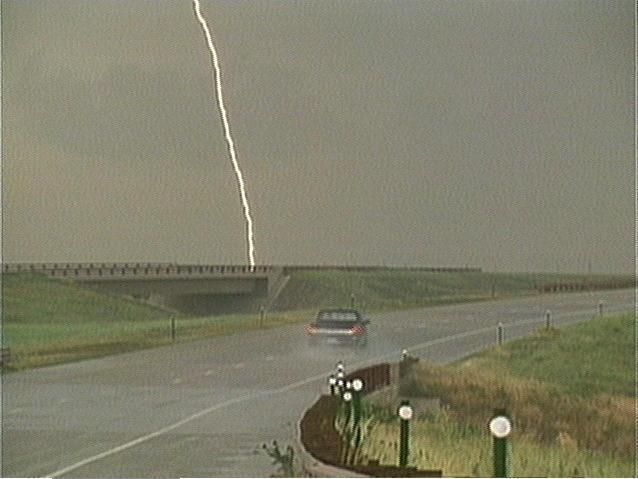Lightning a Reality in the Stormy South

All it takes is one flash of light. One second, and this force of nature can change your life forever.
Mary Ann Maney was lucky. Her Hillsborough home narrowly missed being struck by lightning. Instead, it hit a neighbor's home with the loud boom of an explosion, sending the structure up in flames.
Every year, hundreds of homes in North Carolina are struck by lightning. It's a significant problem, especially for the firefighters who must rush out in a dangerous storm to fight a fire. Chief Rusty Styons of the Raleigh Fire Department says our state is one of the top states for the number of lightning strikes recorded annually.
You can't predict exactly where lightning will strike, even when you take the best precautions. Unfortunately, fire and even death could be the end result.
It was a devastating feeling for Mary Ann Maney to watch what happened in her neighborhood. She says it makes her nearly sick to her stomach to just watch someone's home burn and think it could be her own.
Chief Rusty Styons says the problem is made worse if your house is surrounded by trees. He recommends cutting any trees back that stand around the house. The lightning is going to seek out the highest point typically. That means trees that are very close to the house. Styons' department often sees cases of lightning that has come in on a tree and jumped to the eave of a house.
Lightning doesn't always spark an immediate fire. You can get a deep seeded fire inside the walls. The electricity services like telephone wires and it's something that needs to be monitored over 2 to 3 hours.
If that happens, Styons says you should call 911 immediately and simply not take any chances with the forces of nature.
We can rebuild those houses, but we can't rebuild you.
Eighty-five percent of those struck by lightning are children or young men hit during some kind of outdoor activity or work. Thirty-five percent of lightning-related deaths in North Carolina happen when the victim is in an open field. Twenty-three percent are water related, while 22% involve people struck while under a tree. Only seven percent occur on a Golf Course.









